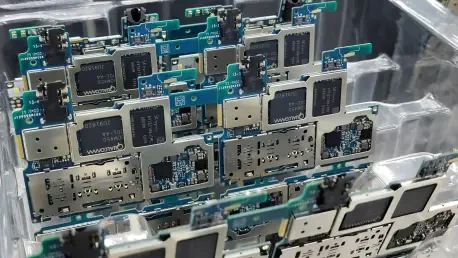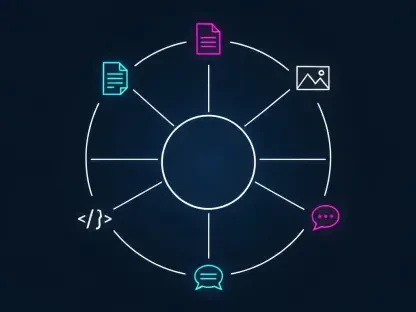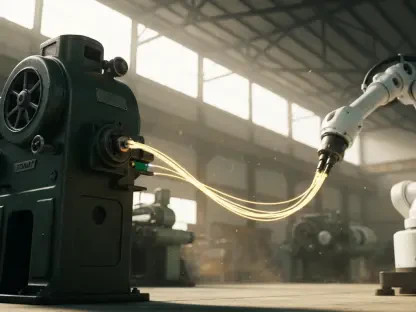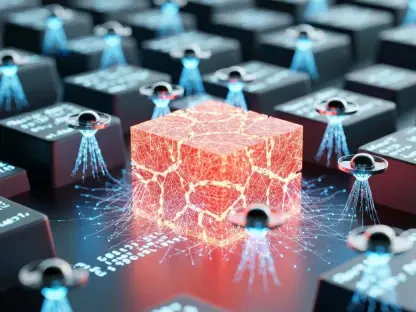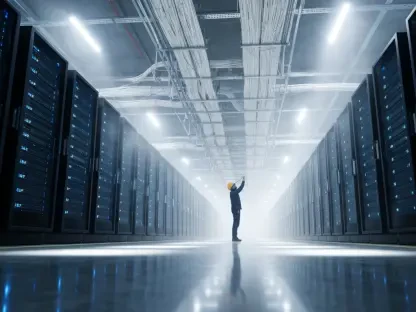In the ever-evolving world of computer storage, Oscar Vail stands out as a leading authority. With a profound understanding of quantum computing, robotics, and open-source initiatives, Oscar consistently provides insights into technological breakthroughs. In this conversation, we explore the fascinating innovations at Kioxia, focusing on their groundbreaking developments in NAND technology and SSD capabilities.
Can you explain what Kioxia’s “dual-axis strategy” for NAND technology involves?
Kioxia’s dual-axis strategy is about tackling two critical aspects of NAND technology simultaneously. One axis is dedicated to increasing the layer count of NAND chips, which directly influences storage capacity. The other axis focuses on improving performance, specifically by employing technologies like Charge-Based Architecture (CBA). This dual approach ensures that we continue to advance in terms of raw capacity while also making gains in speed and efficiency.
How does the splitting of development into two paths affect performance and capacity?
By dividing development into these two paths, Kioxia can target specific technological challenges more effectively. Increasing the layer count allows for creating chips with higher capacities without necessarily increasing the physical size of each die. Meanwhile, improving performance through CBA helps enhance data transfer rates and reduce latency, which can often be bottlenecks in high-capacity storage systems. This strategy ensures that improvements in one area don’t come at the cost of another.
What are the main goals for each path within the dual-axis strategy?
For the high-capacity path, the goal is primarily to push the boundaries of storage density, making it possible to store more data in a given physical volume. On the performance front, the emphasis is on refining data handling capabilities to ensure that these denser chips can still deliver speed and reliability, essential for modern computing tasks.
Kioxia’s new 332-layer NAND chip offers 2Tb capacity per die. Why did the company choose not to use Penta-Level Cell (PLC) technology for this chip?
The decision to avoid PLC technology was rooted in balancing capacity with performance and reliability. While PLC can increase storage density, it often comes with trade-offs in terms of speed and endurance. Instead, Kioxia chose to focus on refining existing technologies, ensuring they deliver high performance and reliability, which is crucial for many of our storage applications.
What are the advantages of avoiding PLC technology in this case?
By avoiding PLC, we maintain higher performance levels and better endurance. PLC often increases the complexity of data access, which can lead to slower operations and higher power consumption. Sticking to more refined processes allows us to sidestep these issues, ensuring our products are both fast and durable.
How does your approach differ from competitors who are exploring PLC technology?
Our approach emphasizes advancing the established technology stack instead of branching into uncharted territories with new cell levels like PLC. This allows us to depend on proven methods to deliver superior products, focusing on overall quality and reliability rather than just pushing for maximum data storage density.
What role does the Charge-Based Architecture (CBA) play in Kioxia’s NAND technology?
Charge-Based Architecture is integral to our efforts in enhancing NAND technology. CBA allows the integration of CMOS circuitry directly with the memory array, which simplifies data flow and amplifies performance. It’s a cornerstone technology that helps us achieve the best possible balance between power efficiency, speed, and reliability.
How does CBA contribute to increased bandwidth, reduced latency, and lower power consumption?
CBA streamlines the connection between processing logic and storage cells. By linking the CMOS circuits closely with the memory, it reduces the electrical distance data has to travel. This results in faster data transactions, reduced latency, as well as lower power usage since the energy needed for data movement and processing is minimized.
Can you explain how CMOS circuitry is connected to the memory array within CBA?
The integration in CBA involves placing the CMOS logic very close to the memory cells, effectively embedding the two. This close proximity allows for faster, direct communication and minimizes interference, improving the overall efficiency of data transfer within the chip.
Kioxia has mentioned the potential for larger capacity SSDs in the future. Can you expand on what developments might enable this?
Going forward, we are looking at a combination of increasing NAND layer counts and refining storage architecture designs to take full advantage of each advancement. Innovations in data management algorithms and controller technology also play a crucial role, allowing us to squeeze more usable space out of each physical component.
Are there any specific innovations you’re working on to enhance SSD capacity?
We are constantly exploring new materials and structures that can support higher data densities and testing novel methods for error correction and data integrity that will allow us to safely scale up capacities without compromising performance.
The current focus is on the CM9 and LC9 series SSDs. Could you highlight the key features and target applications of each series?
The CM9 series is built around high-performance needs, particularly in AI and data analytics applications where speed is a primary concern. The LC9 series, on the other hand, emphasizes sheer capacity, tailored for enterprises that require extensive data storage capabilities. Each series is designed to address the unique demands of these distinct user bases.
What distinguishes the CM9 series in terms of performance, particularly for AI applications?
For AI applications, the CM9 series excels by providing rapid data access speed and efficiency, thanks to advanced technologies like CBA. These features are essential for AI workloads that rely on quick data processing capabilities to learn and adapt in real time.
How does the LC9 series achieve up to 122TB capacity, and what kind of users are you targeting with this product?
The LC9 series accomplishes its impressive capacity through highly optimized storage architecture and high-density NAND chips. These SSDs are ideal for data centers and enterprises needing significant data storage without sacrificing performance, such as cloud service providers and large-scale data researchers.
Kioxia is developing an SSD using XL-Flash SLC technology, expected to exceed 10 million IOPS. Can you explain what XL-Flash SLC technology is?
XL-Flash SLC technology is a specialized single-level cell memory that excels in speed and endurance. It’s designed to handle massive input/output operations per second (IOPS), making it perfect for tasks that demand rapid data processing, such as high-frequency trading or real-time analytics.
What are the main benefits of achieving such high IOPS with XL-Flash technology?
Reaching such high IOPS means faster data transactions, which can significantly enhance applications requiring immediate data access and processing. It eliminates bottlenecks that could slow down systems, allowing for unparalleled performance in demanding environments.
How does Kioxia plan to address the evolving demands in the SSD market?
We’re continuously evolving our technology and strategies to meet market needs, focusing on expanding storage capacities, improving speed, and minimizing power consumption. We’re also exploring new controller designs and manufacturing processes to keep pace with changing consumer and enterprise needs.
Are there any new controller designs or process improvements you’re focusing on?
We’re investing heavily in refining our controller designs to better manage the complex algorithms needed for high-capacity and high-performance SSDs. Process improvements like adopting new lithography techniques are also on the horizon to enhance chip efficiency.
How important is energy efficiency in the development of your SSDs, and how is it achieved?
Energy efficiency remains a primary concern for SSD development. We achieve it through advanced circuit designs that minimize power use, architecture improvements like CBA that optimize energy management, and firmware optimizations that ensure energy is consumed only when necessary.
In the context of Kioxia’s corporate strategy, how does the company’s roadmap align with long-term goals?
Our roadmap is tightly aligned with our long-term goals of leading the NAND technology space. We aggressively pursue innovations that not only offer better performance and storage capacity but also sustainably benefit the tech ecosystem. Our strategy ensures we are well-positioned to capitalize on future advancements.
How do you anticipate future advancements in NAND technology fitting into overall corporate objectives?
Future advancements will propel us toward more sustainable, high-performance solutions that align with global tech trends while meeting the increasing demands for data storage. These innovations will fuel our strategy of growth and leadership in the NAND landscape, solidifying our position in the market.
Based on your roadmap, when can consumers expect to see new products utilizing the 332-layer NAND technology?
While precise timelines depend on testing and manufacturing processes, consumers can expect to see products incorporating our 332-layer NAND technology in the upcoming product cycles, aligning with our commitment to delivering cutting-edge solutions as soon as they’re rigorously validated.
What is your forecast for the future of NAND technology?
I foresee NAND technology continuing to evolve towards even higher densities and faster speeds, integrating more with emerging tech like AI and machine learning. We’ll likely see smarter SSDs that not only store data but actively contribute to data processing, further blurring the lines between memory and computing in the future.
